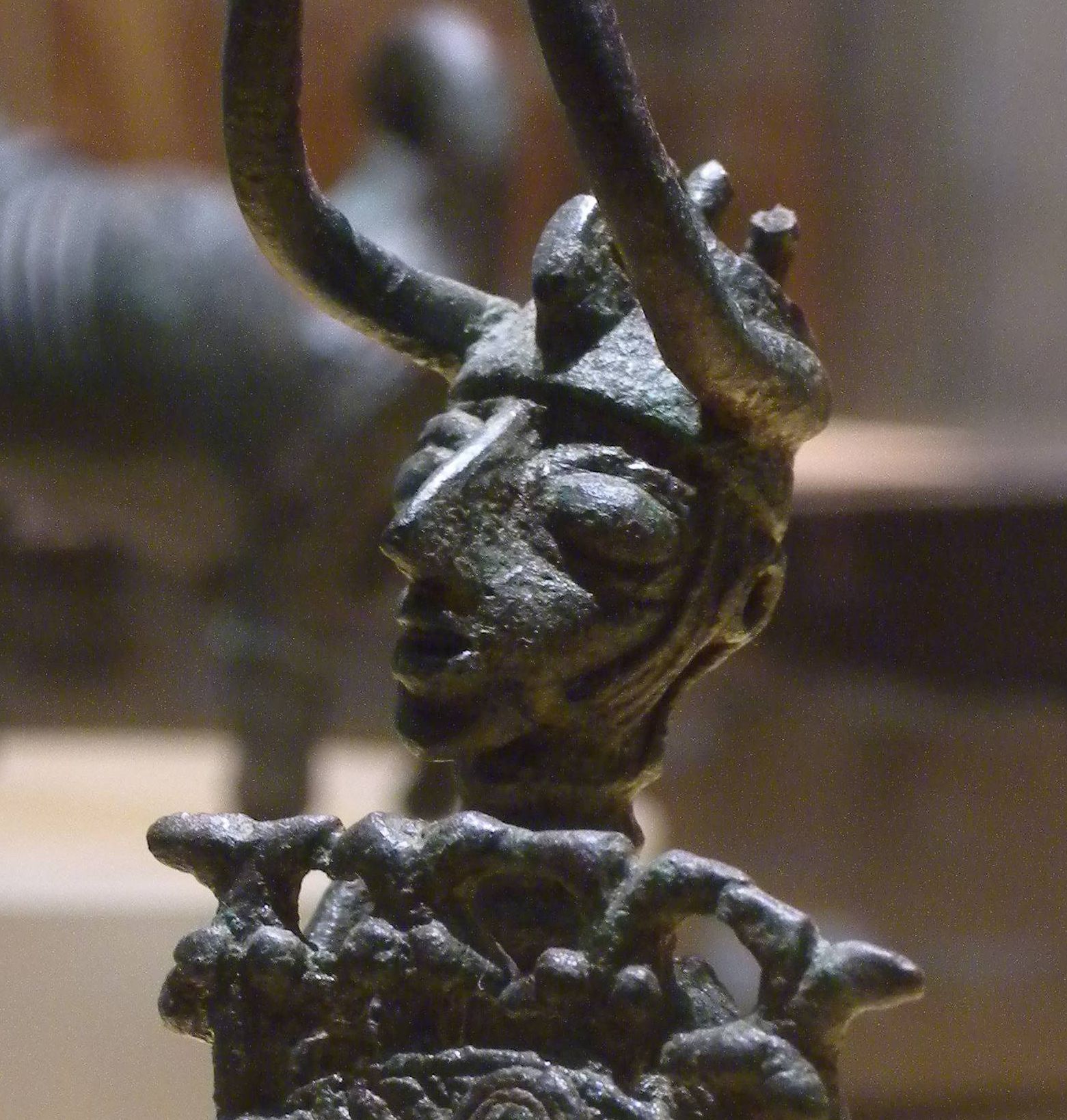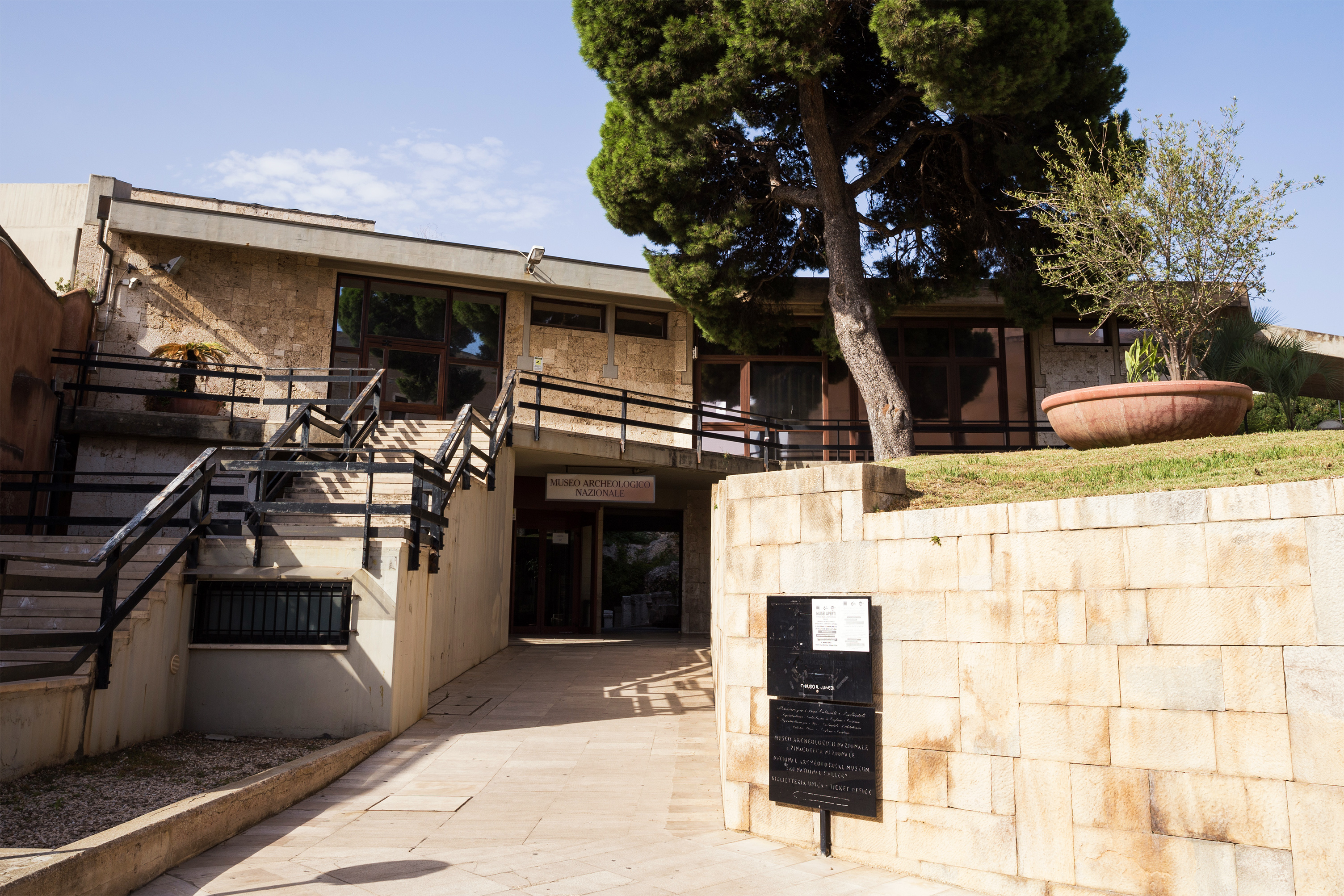|
Nuragic Bronze Statuettes
The Nuragic bronze statuettes (''bronzetti'' in Italian, ''brunzitos'' or ''brunzitus'' in Sardinian) are typical Nuragic Sardinian bronze sculptures of the final phase of the Bronze Age and the early Iron Age. During the archaeological excavations in Sardinia, more than 500 bronze statuettes of this type have been discovered, mainly in places of worship like their holy wells, and the so-called megara temples, but also in villages and nuraghes. Several statues were also found in excavations carried out in Etruscan tombs of central Italy from the 9th-8th centuries . Probably obtained with the lost wax technique, they can measure up to 39 cm. They represent scenes of everyday life of the nuragic people, depicting characters from various social classes, animal figures, warriors, chiefs, divinities, everyday objects and ships. Archaeologists have not been able yet to date the figures accurately: They were allegedly made between the 9th~6th centuries ; ... [...More Info...] [...Related Items...] OR: [Wikipedia] [Google] [Baidu] |
Ballao
Ballao, (Ballau in the Sardinian language), is a ''comune'' (municipality) in the Province of South Sardinia in the Italian region Sardinia, located about northeast of Cagliari, in the Gerrei traditional subregion. It was founded around 1300, when the inhabitants of the ancient hill village of Nuraxi moved in the nearby plain, nearer to the Flumendosa river, to improve their agricultural output. It is home to the Funtana Coberta, a Bronze Age archaeological site. Ballao borders the following municipalities: Armungia, Escalaplano, Goni, Perdasdefogu, San Nicolò Gerrei, Silius, Villaputzu Villaputzu ( sro, Bidda de Putzi or ) is a municipality in the Province of South Sardinia in the Italian region and island of Sardinia, located about northeast of the Sardinian capital Cagliari. It is located in a short plain at the mouth of the .... References External links Official website Cities and towns in Sardinia {{Sardinia-geo-stub ... [...More Info...] [...Related Items...] OR: [Wikipedia] [Google] [Baidu] |
Ardara, Sardinia
Ardara ( sc, Àldara) is a ''comune'' (municipality) in the Province of Sassari in the Italian region Sardinia, located about north of Cagliari and about southeast of Sassari. It was one of the capitals of Giudicato di Torres. The village houses the ruins of the Castle of the Giudicato of Torres (11th century), the medieval walls, and the Romanesque Basilica of Santa Maria del Regno. Ardara borders the municipalities of Chiaramonti, Mores, Ozieri, Ploaghe and Siligo. Ardara is the birthplace of the singer Roberto Meloni, who represented Latvia at the 2007 and 2008 Eurovision Song Contest The Eurovision Song Contest 2008 was the 53rd edition of the Eurovision Song Contest. It took place in Belgrade, Serbia, following the country's victory at the with the song "Molitva" by Marija Šerifović. Organised by the European Broadcastin ... with Bonaparti.lv and Pirates of the Sea bands. References Cities and towns in Sardinia Castles in Italy {{Sardinia ... [...More Info...] [...Related Items...] OR: [Wikipedia] [Google] [Baidu] |
Serri, Sardinia
Serri (Latin: Biora) is a ''comune'' (municipality) in the Province of South Sardinia in the Italian region Sardinia, located about north of Cagliari. As of 31 December 2004, it had a population of 725 and an area of .All demographics and other statistics: Italian statistical institute Istat. Serri borders the following municipalities: Escolca, Gergei, Isili, Mandas, Nurri Nurri is a ''comune'' (municipality) in the Province of South Sardinia in the Italian region Sardinia, located about 60 km north of Cagliari. As of 31 December 2004, it had a population of 2,385 and an area of 73.9 km².All demographics a .... Demographic evolution Colors= id:lightgrey value:gray(0.9) id:darkgrey value:gray(0.8) id:sfondo value:rgb(1,1,1) id:barra value:rgb(0.6,0.7,0.8) ImageSize = width:455 height:303 PlotArea = left:50 bottom:50 top:30 right:30 DateFormat = x.y Period = from:0 till:2000 TimeAxis = orientation:vertical AlignBars = justify ScaleMajor = gridcolor ... [...More Info...] [...Related Items...] OR: [Wikipedia] [Google] [Baidu] |
Teti, Sardinia
Teti is a ''comune'' (municipality) in the Province of Nuoro in the Italian region Sardinia, located about north of Cagliari and about southwest of Nuoro. As of 31 December 2004, it had a population of 784 and an area of .All demographics and other statistics: Italian statistical institute Istat. Teti borders the following municipalities: Austis, Ollolai, Olzai, Ovodda Ovodda ( sc, Ovòdda) is a ''comune'' (municipality) in the Province of Nuoro in the Italian region Sardinia, located about north of Cagliari and about southwest of Nuoro. Ovodda borders the following municipalities: Desulo, Fonni, Gavoi, ..., Tiana. Demographic evolution Colors= id:lightgrey value:gray(0.9) id:darkgrey value:gray(0.8) id:sfondo value:rgb(1,1,1) id:barra value:rgb(0.6,0.7,0.8) ImageSize = width:455 height:303 PlotArea = left:50 bottom:50 top:30 right:30 DateFormat = x.y Period = from:0 till:2000 TimeAxis = orientation:vertical AlignBars = justify ScaleMajor = grid ... [...More Info...] [...Related Items...] OR: [Wikipedia] [Google] [Baidu] |
Sardinians
The Sardinians, or Sards ( sc, Sardos or ; Italian and Sassarese: ''Sardi''; Gallurese: ''Saldi''), are a Romance language-speaking ethnic group native to Sardinia, from which the western Mediterranean island and autonomous region of Italy derives its name. Etymology Not much can be gathered from the classical literature about the origins of the Sardinian people. The ethnonym "S(a)rd" belongs to the Pre-Indo-European linguistic substratum, and whilst they might have derived from the Iberians, the accounts of the old authors differ greatly in this respect. The oldest written attestation of the ethnonym is on the Nora stone, where the word ''Šrdn'' (''Shardan'') bears witness to its original existence by the time the Phoenician merchants first arrived to the Sardinian shores. According to Timaeus, one of Plato's dialogues, Sardinia and its people as well, the "Sardonioi" or "Sardianoi" (''Σαρδονιοί'' or ''Σαρδιανοί''), might have been named after "Sardò" ... [...More Info...] [...Related Items...] OR: [Wikipedia] [Google] [Baidu] |
Sardara
Sardara, Sàrdara in the Sardinian language, is a ''comune'' (municipality) in the Province of South Sardinia in the Italian region Sardinia, located about northwest of Cagliari and about northwest of Sanluri. Located in the Campidano plain, it is part of the Marmilla historical region. Heritage Site The Law was implemented by the ruling power of the castle's leaders that dominated the region, while protected its population, the clergy and trading affairs with the help of the Giudical Army, composed by soldiers and free citizens under the direction of the elite corps and the Genoese crossbowmen The Genoese crossbowmen ( it, Balestrieri genovesi) were a famous military corps of the Middle Ages, which acted both in defense of the Republic of Genoa and as a mercenary force for other Italian or European powers. Armed with crossbows, they .... References Cities and towns in Sardinia Spa towns in Italy {{Sardinia-geo-stub ... [...More Info...] [...Related Items...] OR: [Wikipedia] [Google] [Baidu] |
Vulci
Vulci or Volci (Etruscan language, Etruscan: ''Velch'' or ''Velx'', depending on the romanization used) was a rich Etruscan civilization, Etruscan city in what is now northern Lazio, central Italy. As George Dennis (explorer), George Dennis wrote, "Vulci is a city whose very name... was scarcely remembered, but which now, for the enormous treasures of antiquity it has yielded, is exalted above every other city of the ancient world." Vulci was located near the coast of the Tyrrhenian Sea about 80 km northwest of Rome, on the Fiora River, between Montalto di Castro and Canino. Remains of the city can be seen today. The Vulci, like other Etruscans, became master sculptors in bronze as acknowledged by ancient writers. Although most large bronzes have been lost, there remain some magnificent examples of Etruscan bronze work such as the Chimera of Arezzo and the Monteleone chariot, possibly made in Vulci. In the 19th century thousands of the ancient tombs of Vulci were discovere ... [...More Info...] [...Related Items...] OR: [Wikipedia] [Google] [Baidu] |
Urzulei
Urzulei (Orthullè in Sardinian language) is a ''comune'' (municipality) in the Province of Nuoro in the Italian region Sardinia, located about northeast of Cagliari and about northwest of Tortolì. As of 31 December 2004, it had a population of 1,412 and an area of .All demographics and other statistics: Italian statistical institute Istat. The municipality of Urzulei contains the ''frazione'' (subdivision) Silana. Urzulei borders the following municipalities: Baunei, Dorgali, Orgosolo, Talana, Triei Triei is a ''comune'' (municipality) of about 1,000 inhabitants in the province of Nuoro in the Italian region Sardinia, located about northeast of Cagliari and about north of Tortolì. Triei borders the following municipalities: Baunei, Lotz .... Demographic evolution Colors= id:lightgrey value:gray(0.9) id:darkgrey value:gray(0.8) id:sfondo value:rgb(1,1,1) id:barra value:rgb(0.6,0.7,0.8) ImageSize = width:455 height:303 PlotArea = left:50 bottom:50 top:30 ... [...More Info...] [...Related Items...] OR: [Wikipedia] [Google] [Baidu] |
Museo Archeologico Nazionale (Cagliari)
The National Archaeological Museum of Cagliari ( it, Museo Archeologico Nazionale di Cagliari, italic=no) is a museum in Cagliari, Sardinia (Italy). The museum houses findings from the pre-Nuragic and Nuragic age to the Byzantine age. These include a large collection of prehistoric bronze statuettes from the Nuragic age, some earlier stone statuettes of female divinities, reconstruction of a Phoenician settlement, the Nora Stone, Carthaginian goldsmith examples, Roman and Italic ceramics and Byzantine jewels. The museum houses a valuable collection of wax anatomical models made in Florence by the sculptor Clemente Susini from dissections by the anatomist Francesco Antonio Boi between 1801 and 1805. The collection is housed in a pentagonal room. Preparation of the models was funded by Charles Felix (1765-1831), the younger brother of King Victor Emmanuel I of Sardinia (1759-1824), and the collection was originally held in his Museum of Natural History and Antiquities - th ... [...More Info...] [...Related Items...] OR: [Wikipedia] [Google] [Baidu] |
Pigorini National Museum Of Prehistory And Ethnography
The "Luigi Pigorini" National Museum of Prehistory and Ethnography is a public and research museum located in Rome, Italy. Established in 1875 and opened in 1876 by Luigi Pigorini, from 2016 it is one of the four museums inside the Museum of Civilizations' network, and is currently directed by Andrea Viliani. Holdings One important collection of the Pigorini houses is Neolithic artifacts from Lake Bracciano. Another is the early ethnographic collection of Athanasius Kircher. The museum also conserves the Praeneste fibula , native_name_lang = la , image = Praeneste fibula.JPG , image_size = , alt = , image2 = , image2_size = , alt2 = , image_caption = , material = Gold , s ..., the oldest known inscription in the Latin language. References Further reading *Brizzi, Bruno d.1976 ''The Pigorini Museum'' Rome, Quasar. 424 page catalogue with hundreds of plates in colour and black and ... [...More Info...] [...Related Items...] OR: [Wikipedia] [Google] [Baidu] |
Sulcis
Sulcis (''Maurreddia'' or ''Meurreddia'' in Sardinian language) is a subregion of Sardinia, Italy, in the Province of South Sardinia. Geographical extension Its municipalities are: Calasetta, Carbonia, Carloforte, Giba, Gonnesa, Masainas, Narcao, Nuxis, Perdaxius, Piscinas, Portoscuso, San Giovanni Suergiu, Santadi, Sant'Anna Arresi, Sant'Antioco, Tratalias, Villaperuccio, Teulada. Part of the region are also the islands of San Pietro and Sant'Antioco. Today the term "Lower Sulcis" is used to indicate the municipalities that belonged to the old Curatoria of Sulcis (without the Cixerri valley) and, sometimes, it is erroneously attributed to the towns of Pula, Villa San Pietro, Sarroch and Domus de Maria, who never belonged to the territory of ancient Sulci but rather to that of Nora, never belonged to the diocese of Sulci but always to that of Cagliari and, in the Middle Ages, belonged exclusively to the Curatoria of Nuras of the Giudicato of Cagliari. History The oldest tra ... [...More Info...] [...Related Items...] OR: [Wikipedia] [Google] [Baidu] |


